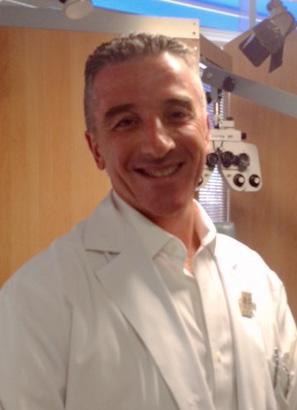
3 minute read
POINT OF VIEW THE OPTOMETRIST
The Optometrist
Idor De Simone optician optometrist at Maugeri Scientific - Clinical Institutes Contactologist www.facebook.com/idordesimone/
The importance of hygiene of eyeglass frames, not only at the time of Covid-19
Cleaning and hygiene are now even more fundamental. It is essential to keep eyeglass frames (of all kinds, even those intended for professional use) sanitized and sterilized to avoid contamination by bacteria, viruses and other pathogenic microorganisms. Sterilization is the final result of a process that seeks to assure the condition in which the survival of microorganisms is highly improbable. A material is defined as sterile if the sterility assurance level is less than 10-6, so when the probability of finding a microorganism is less than one in a million. The various processes of sterilization destroy microorganisms causing the lethal alteration of some of their essential components: they shall, in particular, determine denaturing proteins and nucleid acids and the degradation of membrane and cell walls components. According to the norms, it is necessary to sterilize all the items belonging in Category II (semicritical items including eyeglass frames) which come into contact with intact mucous membranes, whose requirement is the desirable sterility; a high level disinfection with a good level of safety guarantees that the article is free of pathogenic microorganisms in most cases. Before sterilization a series of preventive procedures must be followed to reduce the microbial load and make the sterilizing action more effective and they can be summed up by five points: 1. Decontamination 2. Cleansing 3. Rinsing 4. Drying 5. Packing Sterilization can be carried out by:
PHYSICAL PROCESSES
• Dry heat: sterilization occurs through the contact of the object with hot air, which acts by oxidation of the cellular components. Dry oven or Pasteur oven are used, which require a temperature of 160 degrees for an hour or 180 degrees for 30 minutes to be reached. However, it is a disused and replaced by steam sterilization technique because it is slow and and it’s impossible to verify that the sterilization has taken place and the maintenance over time of the achieved result. • Moist heat: it is a technique that exploits the action of flowing steam (Koch’s steam sterilizer)
or saturated (autoclave) eliminating microorganisms by proteins and other biomolecules denaturation. • Ultraviolet radiation: UV systems cannot be considered sterilizers because they mainly have a bacteriostatic action but they can maintain sterility (physical antiseptic). They are mainly used for the bacteriostaticity of worktops or chimney’s air. • Ionizing radiation (which are divided into Gamma and Beta rays): Gamma rays are electromagnetic radiation that denature proteins and change nucleid acids, but they can damage the surfaces and they require expensive implants (with a very high carcinogenic risk). Beta rays are used for biomedical products and food preservation (the source is not radioactive). • Microwaves: it is a technique used in various areas because it’s practical and cheap. The action of microwave system is based on both thermal and non-thermal effect. The thermal effect derives from the ability to generate very rapid molecular vibrations, leading to an increase in temperature (altering the vital and functional capacities of microorganisms). The non-thermal effect is due to the energy carried by electromagnetic waves that is transferred to the affected matter.
CHEMICAL PROCESSES
• Peracetic acid: it is used very limited due to his high dangerousness. • Ethylene oxide: it is a highly flammable gas and it is explosive if mixed with air. It takes place by autoclave and it is mainly used for medical surgical devices. • Hydrogen peroxide: it is one of the most advanced techniques for sterilization but unfortunately the machines are expensive. The advantages are remarkable: o sterility is maintained up to 12 months o the sterilization process doesn’t release anything toxic over the treated materials o the operating temperature is very low and it can also be applied on every material..
In the optical field (beyond the Covid-19 period) it would be hoped to periodically recommend a sterilization of the eyeglass frames used (even before the tests the customer carries out in the shop during the choice), considering the increase in dermatological diseases more and more diffused.
In addition, this should also be done on test goggles for sight examination. One of the most common and safe instruments used for sterilization in an optical environment are the UVC 253,7 nm Germicidal Lamps which eliminate quickly every microorganism. The machine contains an internal grid which keeps the products away from the reflective surface and allows uniform irradiation, which improves germicidal action. This type of treatment is particularly fast because it requires from 60 to 90 minutes. The lenses should be removed to avoid yellowing.







